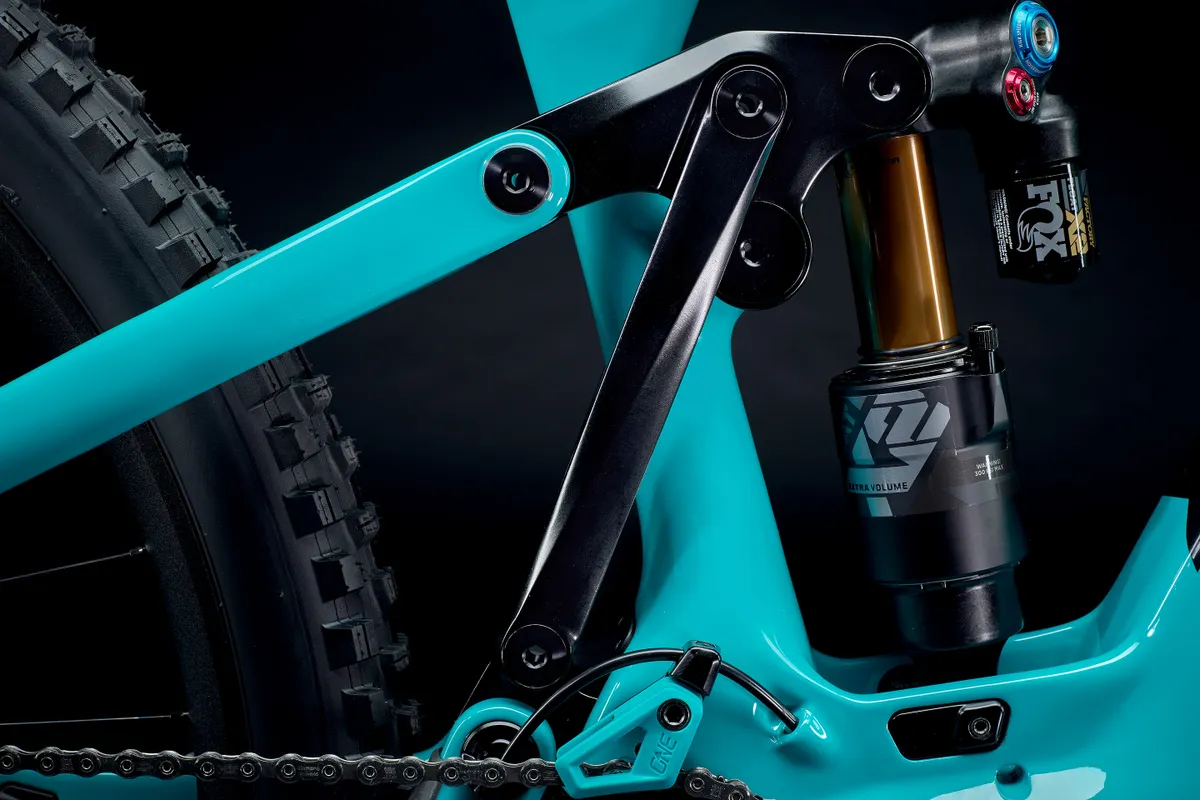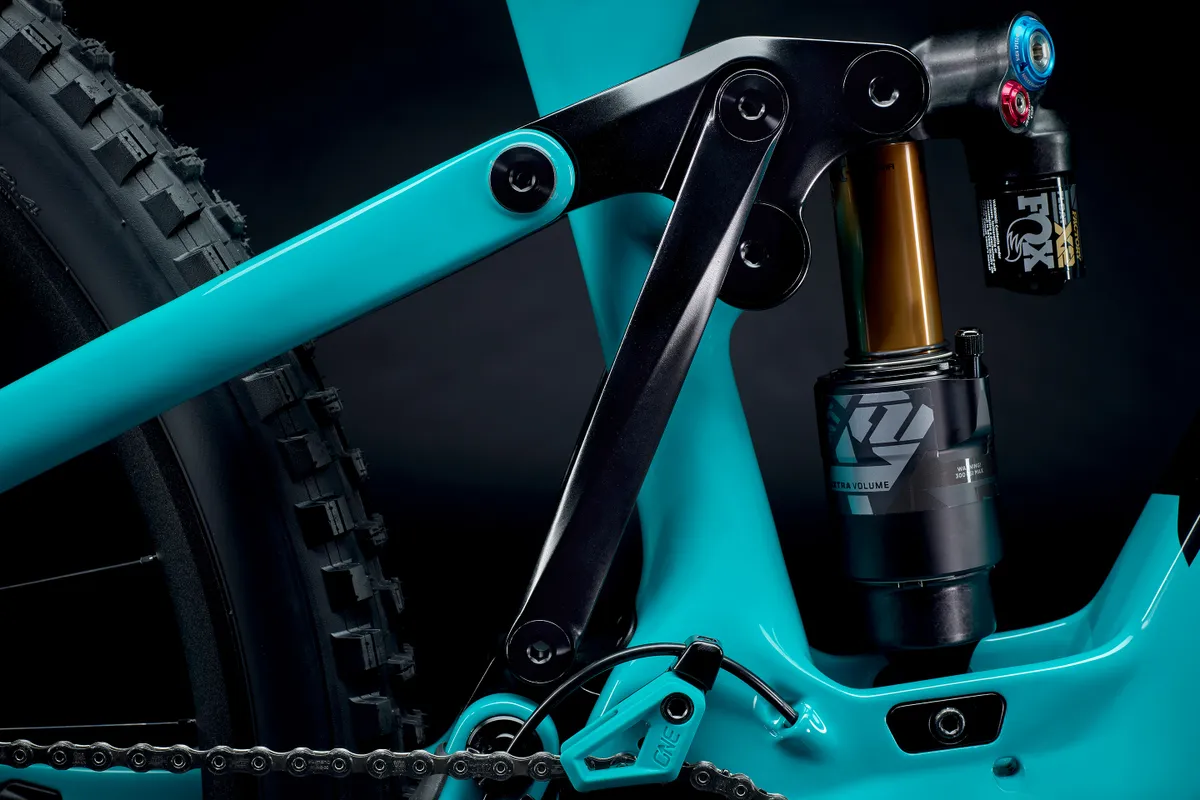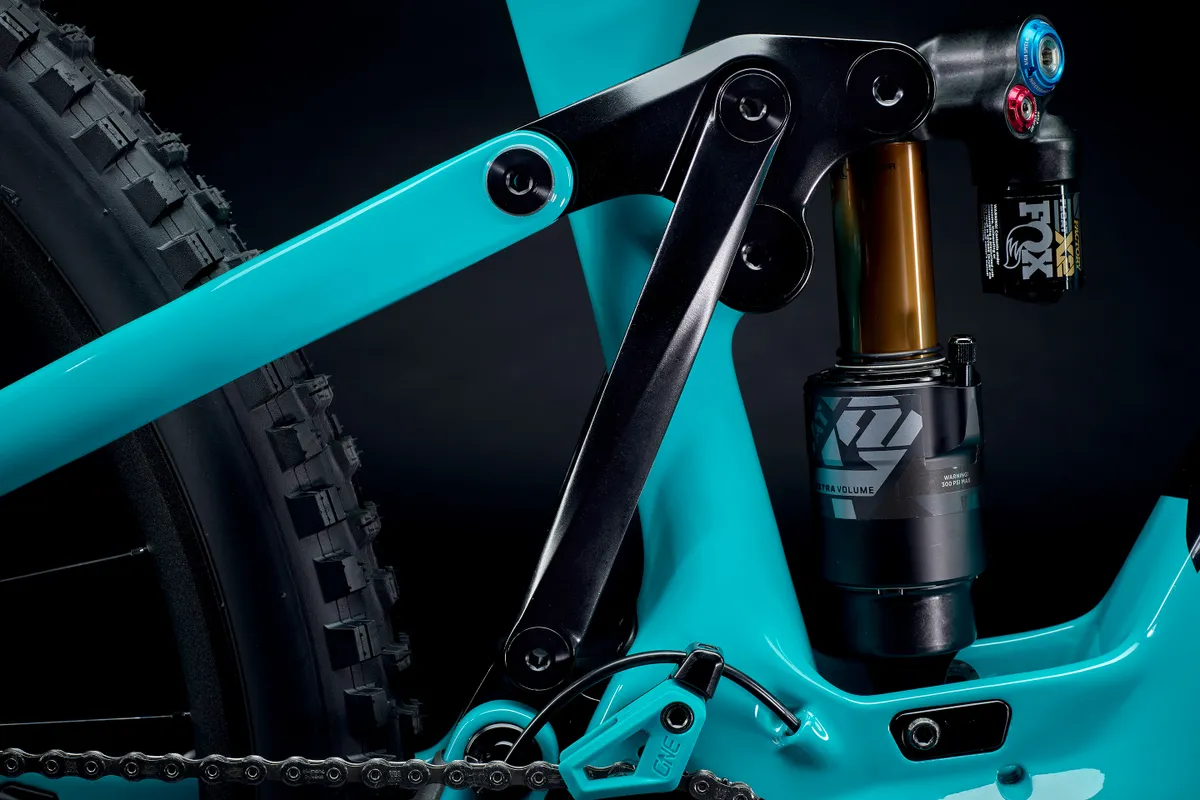Yeti’s new and first electric mountain bike, the 2022 Yeti 160E, is built for high-speed enduro racers and debuts the brand’s latest suspension platform – Sixfinity.
This six-bar suspension design is what's taken Yeti so long to release an electric mountain bike, with the first Sixfinity platform bike developed back in 2016. Its engineers have been working hard on getting it just right to deal with the rigours and challenges that making electric mountain bikes faces.
So, rather than taking an existing design and making compromises in one area or another to make the frame, suspension and motor work together, Yeti designed the 160E from the ground up.
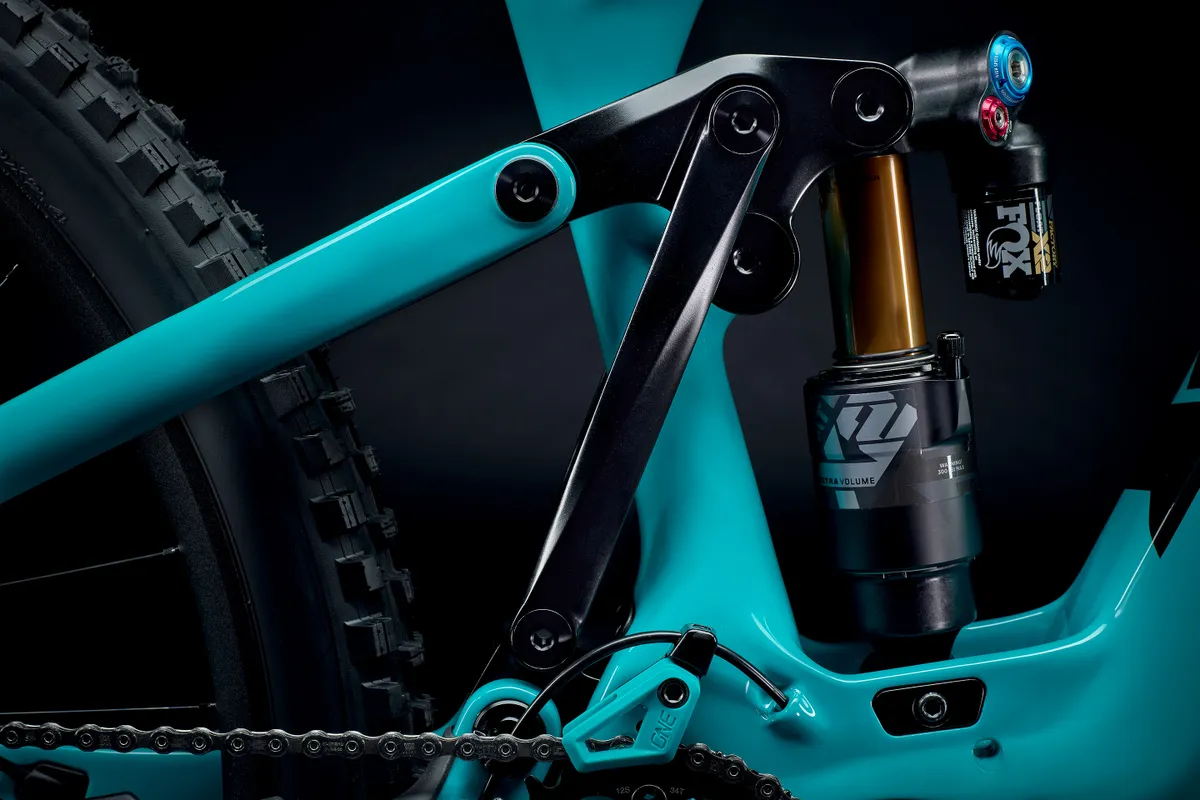
The Sixfinity design has 160mm of rear-wheel travel and features rider-adjustable progression rates thanks to lower shock mount chips.
Of course, it wouldn’t be a Yeti without an impressive price tag. The two-model line-up sees prices start at £9,499 / $10,100 / €10,990 for the 160E C-Series and rise to £11,899 / $12,700 / €13,790 for the 160E T-Series bike.
2022 Yeti 160E frame and suspension details
Built from carbon fibre, like the rest of Yeti’s MTB range, the 160E’s frame has been designed around 29in wheels and has a host of neat features you’d expect to see on this type of bicycle exotica.
The frame is rated to Yeti’s DH strength standards but has a 130kg system (rider and bike combined) weight limit.
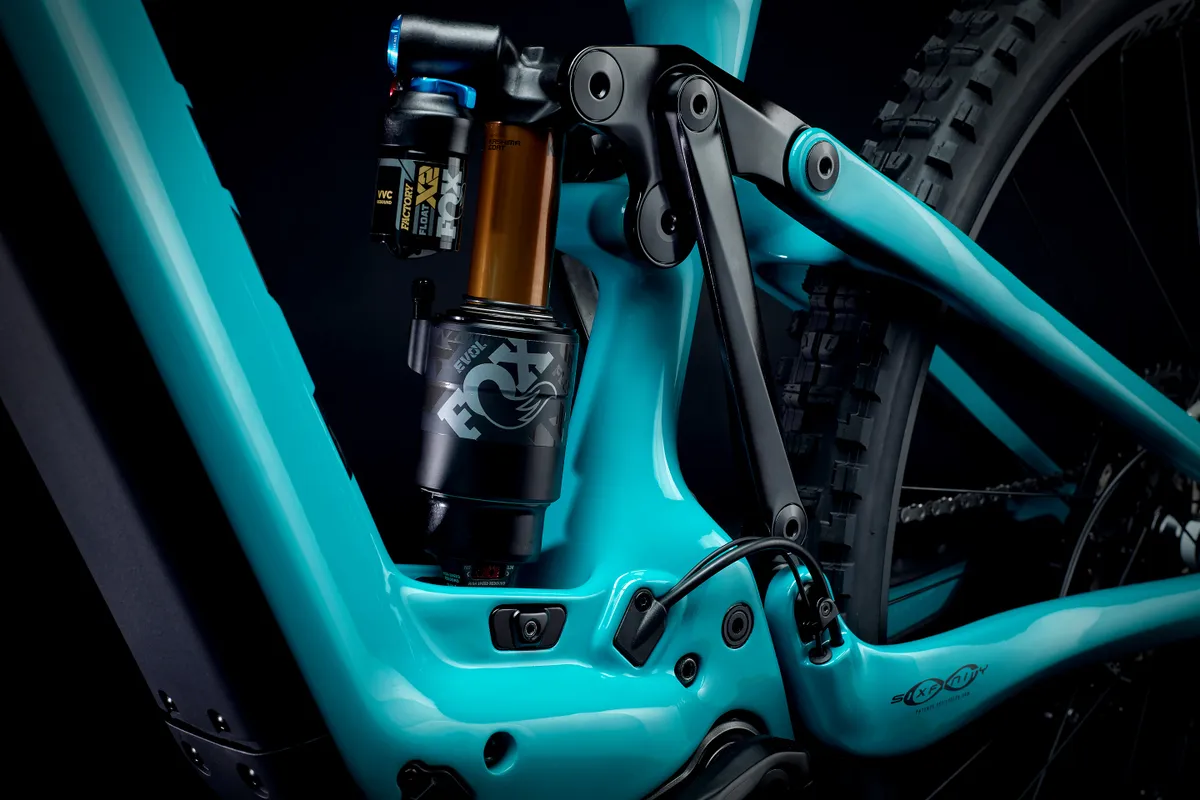
The internally routed cables – spanning from front to back – feature a tube-in-tube design to make routing quick and easy through the swingarm. The cables are hidden in the down tube behind the battery, with clips keeping everything in place.
The cable ports should help to eliminate internal cable rattle and are configurable according to the brake and gear setup.
The 160E uses SRAM’s UDH derailleur hanger and has in-built chainstay chain slap protection. There’s a small linkage mudguard and a water drain hole to stop water collecting around the lower shock mount.
It has a 31.6in seat tube diameter, while the seat tube’s length is straight and uninterrupted to the bottom bracket to allow for more dropper post insertion and longer travel posts.

There’s clearance for up to a 2.6in rear tyre, and while it has been designed for 29in wheels, Yeti says the 160E can run a 27.5in rear wheel to create a mullet setup (29in front, 27.5in rear).
Unsurprisingly, it has space for a water bottle inside the front triangle, but the small size requires a lower-volume bottle to fit.
Sixfinity six-bar suspension
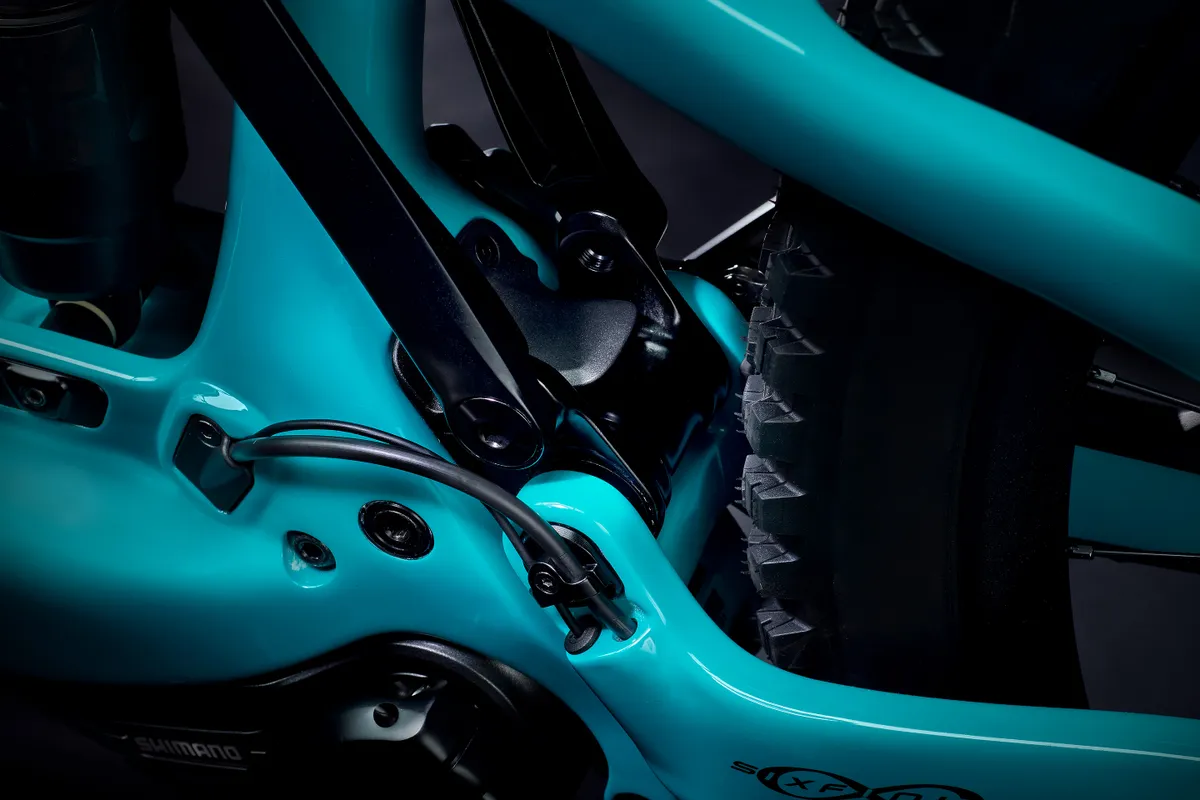
Yeti’s first ebike moves the brand away from its Switch Infinity link design to a six-bar linkage design. The results of the new system’s design are almost the same, though – where anti-squat, leverage ratio and anti-rise are controlled during compression (either via the Switch Infinity link or lower link on the new Sixfinity design), which works by moving up as the suspension compresses and then down.
Yeti says that not only did the new Sixfinity design create the necessary suspension kinematics for an ebike, but it also meant the chassis could be built strong and stiff enough to handle the additional forces of weight and speed associated with ebikes.
Anti-squat goals
Yeti claims the Sixfinity link’s switch in the rotational direction (known as the inflection point) from up to down, allows it to tune the suspension’s anti-squat value so it remains almost entirely constant at around 100 per cent across the bike’s range of gears as it cycles through up to the first 90mm of its travel.
It dubs this portion of the travel the ‘pedalling zone’ and says that if anti-squat is set to around 100 per cent in this area, the bike’s suspension will resist pedalling forces – neither extending nor compressing under power – creating a stable yet traction-rich ride.
As the suspension compresses beyond the ‘pedalling zone’ and goes deeper into its travel, anti-squat figures drop off between 50 per cent (for the lowest gear) and -75 per cent (for the highest gear), which should mean the suspension is less affected by chain forces deeper into its travel.
Anti-squat is how much the bike’s suspension resists compression or causes extension while pedalling. 100 per cent anti-squat means the suspension should neither compress nor extend.
Balancing brake forces
Yeti's Sixfinity link also tunes the anti-rise. In the 160E’s case, Yeti wanted the figure to remain as constant as possible throughout the bike’s travel to help maintain its geometry.
At between 58 per cent at full extension, 65 per cent at sag and 61 per cent at bottom-out, the 160E’s rear suspension is more likely to extend slightly under braking.
Yeti claims aiming for this figure balances traction and the preservation of geometry when braking.
Anti-rise is how much of an effect the rear brake has on the bike’s suspension, either compressing it or extending it. Over 100 per cent anti-rise will cause the rear suspension to compress, while less than 100 per cent will cause it to extend.
Adjusting the rate of progression
Thanks to the lower shock mount, Yeti has made it possible to adjust how progressive the 160E’s rear suspension is.
There are three settings, starting at 35 per cent in its most progressive position, dropping to 30 per cent in the middle setting and then 25 per cent in the least progressive.
The 35 per cent setting should feel the plushest at the start of its travel but the hardest towards the end; the 30 per cent setting should feel reasonably plush at the start but harden up well; while the 25 per cent setting will feel the most supportive but least plush.
This level of in-built progression makes the 160E well suited to coil-sprung shocks – because the spring is linear in nature – but can also work with high-volume air shocks with no volume reducer spacers (that create a progressive spring rate).
Each of these progression settings alters the travel minimally (from 159mm to 163mm) and doesn’t affect anti-squat or anti-rise.
2022 Yeti 160E geometry
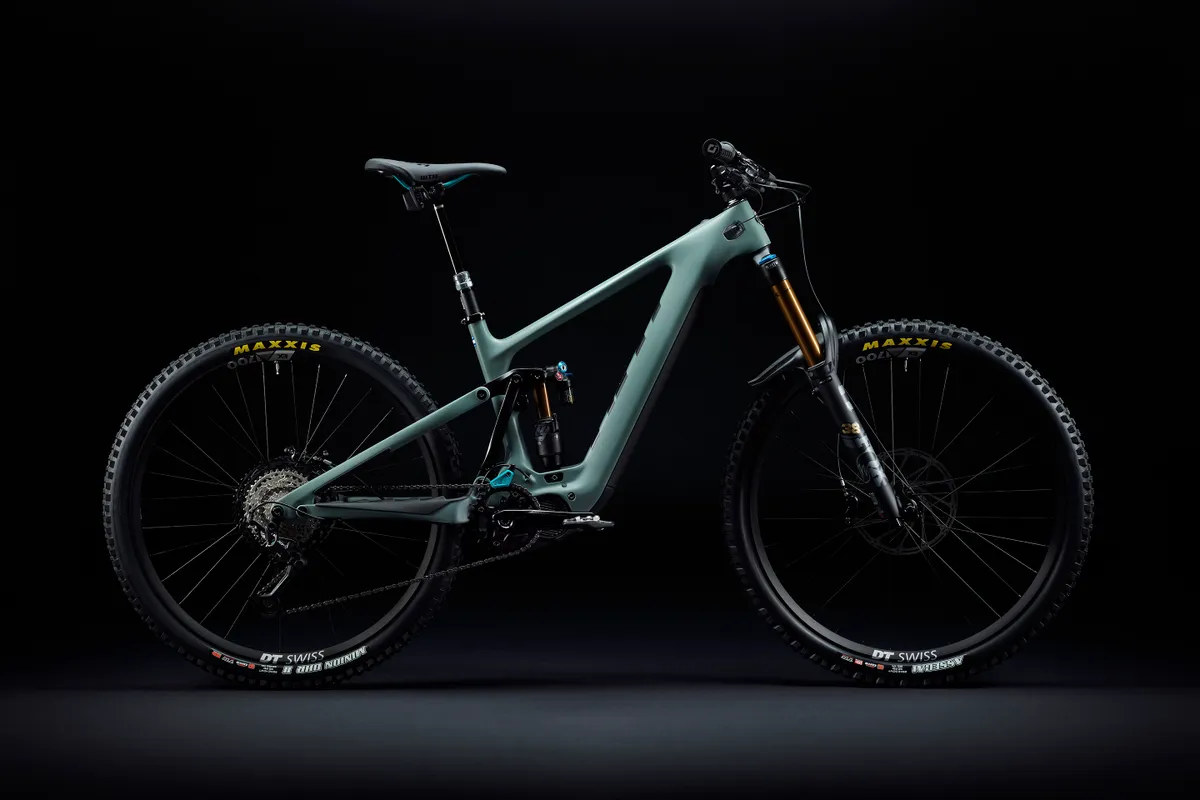
Yeti says the 160E has been developed as a race bike, so is designed for speed. Therefore, it not only needs to perform well with the motor engaged, but it also needs to ride well once the motor cut-off speed has been exceeded.
To do this, its geometry has been created to meet the demands of the Yeti race team, including EWS riders Jared Graves and Richie Rude, who provided plenty of feedback.
Although the bike’s suspension is adjustable, its geometry is not; it has one fixed position. The 160E is offered in four sizes, from small to extra-large, designed for people from 155cm to 200cm in height.
Headline figures include a 64.5-degree head tube angle, a 78-degree effective seat-tube angle (measured with the seatpost set to the same height as the top of the top tube), 446mm chainstays across all sizes and a 350mm bottom bracket height.
| Size | Small | Medium | Large | Extra-large |
|---|---|---|---|---|
| Seat tube length (mm) | 380 | 410 | 450 | 495 |
| Top tube length (mm) | 561 | 592 | 613 | 642 |
| Head tube angle (degrees) | 64.5 | 64.5 | 64.5 | 64.5 |
| Effective seat tube angle (degrees) | 78 | 78 | 78 | 78 |
| Chainstay length (mm) | 446 | 446 | 446 | 446 |
| Wheelbase (mm) | 1,209 | 1,240 | 1,262 | 1,292 |
| Bottom bracket height (mm) | 350 | 350 | 350 | 350 |
| Standover (mm) | 754 | 754 | 754 | 754 |
| Stack (mm) | 617 | 620 | 625 | 635 |
| Reach (mm) | 430 | 460 | 480 | 505 |
Reach figures start at 430mm for the small and extend to 505mm for the extra-large.
Wheelbase figures range from 1,209mm to 1,292mm, and top tube lengths go from 561mm to 642mm.
In a world of Specialized Turbo Levos, Kenevo SLs, Santa Cruz Bullits, Marin Alpine Trail E2s and Nukeproof Megawatts, the Yeti’s figures don’t seem hugely revolutionary.
Of course, I’m reserving judgement until I’ve ridden one in anger, and I’ll happily and willingly concede the Yeti enduro race team are far more experienced riders than I am, so must know what works and what doesn’t.
2022 Yeti 160E motor and battery details
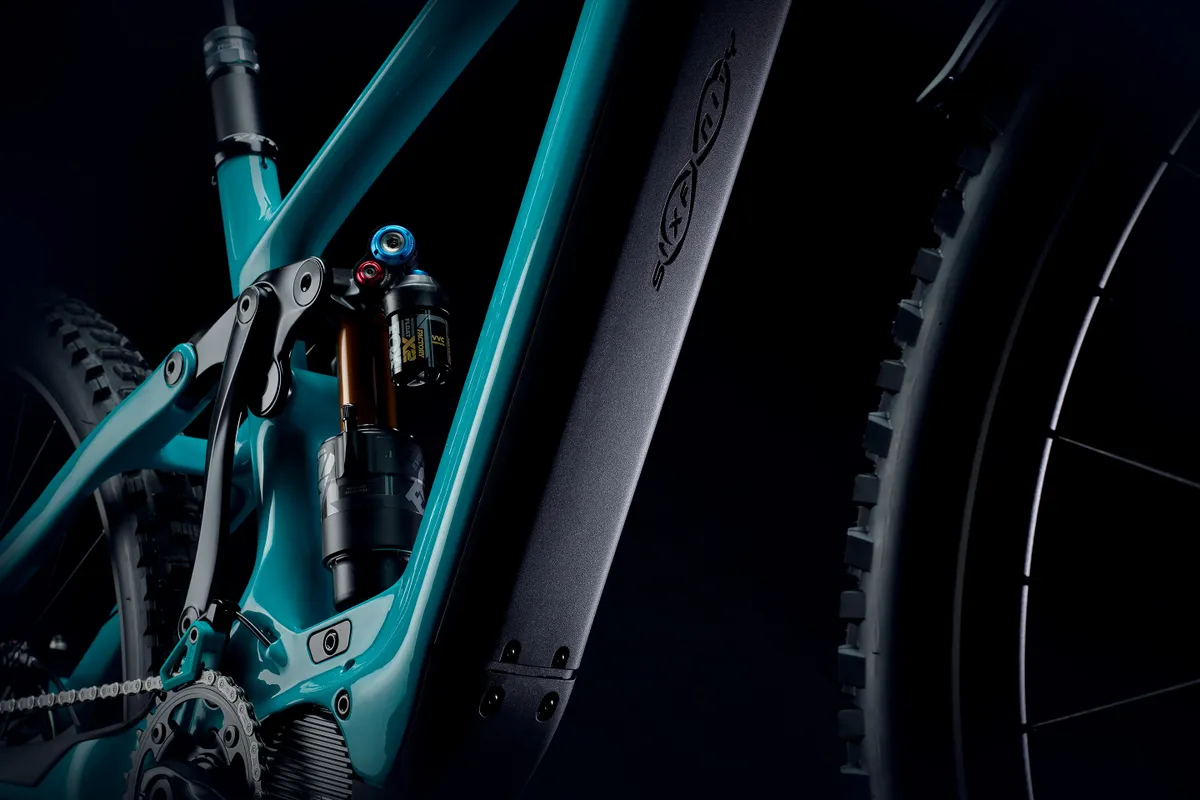
Yeti has chosen to partner with Shimano for the 160E's motor and battery.
The brand’s EP8 motor and 630Wh battery are fitted to all 160E models, along with the slimline EM-800 mode switch and EM-800 full-colour handlebar-mounted display.
The on/off button sits on the top of the top tube, just behind the stem, while the charging port, like many ebikes, is positioned on the non-driveside.
2022 Yeti 160E models, specs, pricing
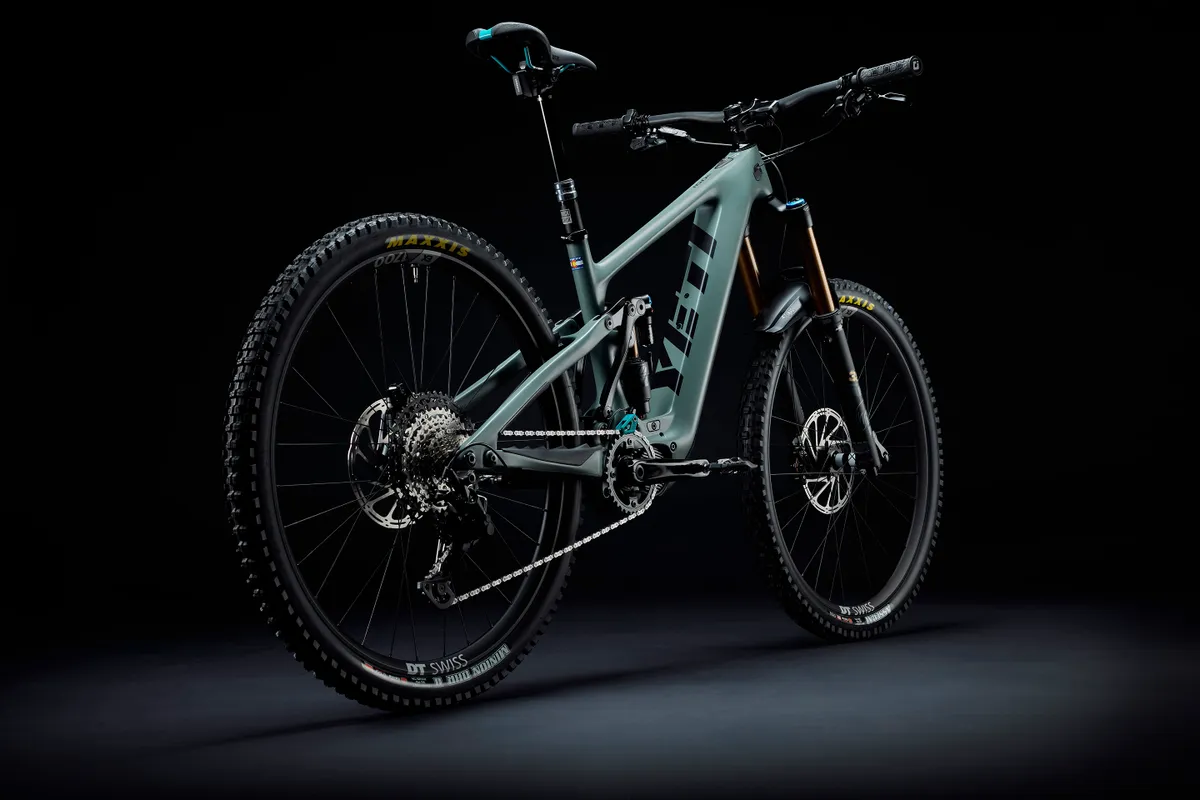
The two-bike 160E range uses the same top-spec Turq Series carbon fibre, and while each build kit differs, they both use Fox suspension, DT Swiss wheels, Maxxis tyres and Shimano mountain bike drivetrains.
They also share Yeti’s brand-new thermoplastic ebike handlebar with in-built cable routing for controllers and displays. The brand claims it has the same damped characteristics as an alloy bar but with the stiffness to weight ratio of a carbon bar.
Yeti also claims the bar is more recyclable than carbon fibre equivalents.
Prices start at £9,499 / $10,100 / €10,990 for the lower spec C1 bike and go up to £11,899 / $12,700 / €13,790 for the T1 model.
Yeti 160E T1 Turq Series

- Frame: Yeti 160E Turq Series, 160mm travel
- Motor / battery: Shimano DU-EP800 / Shimano 630Wh
- Shock: Fox X2 Float Factory
- Fork: Fox 38 Float Factory GRIP2 170mm travel, E-Tune
- Wheelset: DT Swiss EX 1700
- Tyres: Maxxis Assegai 2.5×29in EXO+ (f), Maxxis Minion DHR II 2.4 DD (r)
- Drivetrain: Shimano XT M8100
- Brakes: SRAM Code RSC 220mm rotor (f), 200mm rotor (r)
- Seatpost: SRAM Reverb AXS
- Saddle: WTB Silverado Custom
- Bar: Yeti Carbon ebike
- Stem: Burgtec Enduro MK3
- Grips: ODI Elite Pro
- Price: £11,899 / $12,700 / €13,790
Yeti 160E C1 Turq Series

- Frame: Yeti 160E Turq Series, 160mm travel
- Motor / battery: Shimano DU-EP800 / Shimano 630Wh
- Shock: Fox X2 Float Performance
- Fork: Fox 38 Float Performance 170mm travel, E-Tune
- Wheelset: DT Swiss E1900
- Tyres: Maxxis Assegai 2.5×29in EXO+ (f), Maxxis Minion DHR II 2.4 DD (r)
- Drivetrain: Shimano SLX M7100
- Brakes: SRAM Code R 220mm rotor (f), 200mm rotor (r)
- Seatpost: OneUp Dropper Post V2
- Saddle: WTB Silverado Custom
- Bar: Yeti Carbon ebike
- Stem: Burgtec Enduro MK3
- Grips: ODI Elite Pro
- Price: £9,499 / $10,100 / €10,990
